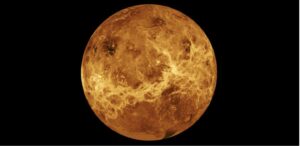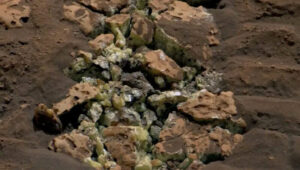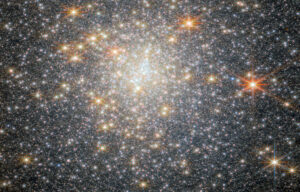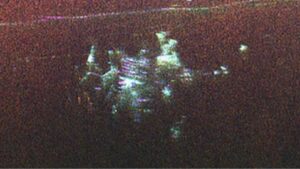This year, the James Webb Telescope produced both stunning images and scientific breakthroughs. From discovering mind-blowingly enormous galaxies to detecting chemicals with a possible biological source on planet K2-18b, we round up some of our favorite, astonishing, jaw-dropping James Webb moments from 2023.
So buckle up, the cosmos is waiting.
“It’s bananas”

Images of the six galaxies, 500-700 million years after the Big Bang. All the galaxies are larger than scientists expected, calling into question existing models of the universe’s formation. Photo: NASA, ESA, CSA, I. Labbe. Image processing: G. Brammer
One of the best parts about covering science is when someone makes a discovery that causes the scientific community to abandon stoic language and embrace awe and wonder.
Such was the case earlier in the year when scientists Joel Leja and Erica Nelson combed through some of the James Webb’s first images. They discovered six galaxies that were way, way bigger than they should have been.
“The amount of mass we discovered means that the known mass in stars at this period of our universe is up to 100 times greater than we had previously thought…It calls the whole picture of early galaxy formation into question,” Leja said in a press release.
Or as his colleague Dr. Nelson said in the same interview, “It’s bananas.”
Water vapor spotted

An artist’s concept of the rocky exoplanet GJ 486 b, which orbits a red dwarf star only 26 light-years away. Scientists think it might have an Earth-like atmosphere. Photo: NASA, ESA, CSA, Joseph Olmsted (STScI)
In the search for extraterrestrial life, almost nothing gets scientists as excited as water. In May, scientists spotted what could be water vapor boiling off the surface of a rocky exoplanet orbiting a dwarf star 26 light-years from Earth.
That’s big news as humans turn their attention toward potentially colonizing space. But the scientists who made the discovery urged caution.
“Water vapor in an atmosphere on a hot rocky planet would represent a major breakthrough,” said Keven Stevenson, the principal investigator behind the findings, in a NASA press release. “But we must be careful and make sure that the star is not the culprit.”
The Whirlpool Galaxy

Photo: ESA/Webb, NASA & CSA, A. Adamo (Stockholm University) and the FEAST JWST team
My favorite James Webb shot from 2023 is this stunning image of M51, colloquially known as The Whirlpool Galaxy. Scientists collected the image as part of an ongoing study of the Whirlpool Galaxy’s interactions with another nearby galaxy called NGC 5195.
“By studying these processes, we will better understand how the star formation cycle and metal enrichment are regulated within galaxies, as well as what are the time scales for planets and brown dwarfs to form,” a European Space Agency press release noted.
Alien farts

This artist’s concept shows what exoplanet K2-18 b could look like. Research suggests the planet might have alien life. Illustration: NASA, CSA, ESA, J. Olmsted
Astrophysicists using the James Webb Telescope’s “unprecedented sensitivity” found something interesting in the atmosphere of a planet called K2-18b back in September. The discovery was a foul-smelling chemical compound produced by phytoplankton here on Earth. The scientists involved jokingly referred to the find as “alien farts.”
When coupled with a previous discovery of water vapor in K2-18b’s atmosphere and the planet’s location in the so-called “habitable” zone around its star, the discovery of chemicals with a possible biological source is extremely exciting. Many researchers believe if there’s life out there, we’ll find it on K2-18b first.
And that would “transform our understanding of our place in the universe,” as Nikku Madhusudhan, lead researcher on the project, said in a NASA statement.
Physics-defying planets in the Orion Nebula

The Orion Nebula, a star factory and host to many newly discovered planetary systems. Photo: NASA, ESA, CSA, McCaughrean, Pearson
Scientists have long recognized gigantic gas clouds like the Orion Nebula as star factories. But researchers pointing the James Webb into the nebula in September found something they weren’t expecting, over 80 pairs of Jupiter-sized planets whizzing around in the gas cloud untethered to stars.
Swiftly dubbed “JuMBOs” (Jupiter Mass Binary Objects) by the acronym-loving scientific community, we don’t know how the planets came to be.
“Gas physics suggests you shouldn’t be able to make objects with the mass of Jupiter on their own, and we know single planets can get kicked out from star systems. But how do you kick out pairs of these things together?” Mark McCaughrean, the European Space Agency’s senior science advisor, told BBC News. “Right now, we don’t have an answer. It’s one for the theoreticians.”
The light of cosmic dawn

Astronomers estimate this image of the Pandora Cluster contains 50,000 sources of near-infrared light. Photo: NASA, ESA, CSA, I. Labbe (Swinburne University of Technology) and R. Bezanson (University of Pittsburgh). Image processing: Alyssa Pagan (STScI)
The last item in our James Webb roundup is simultaneously the most recent and the oldest. In November, our old friend Joel Leja (of the “it’s bananas” story) published a paper describing the second and fourth most distant galaxies ever found. The same paper also described the oldest known galaxy, JADES-GS-z13-0.
Light from the galaxies traveled 13 billion years to reach the James Webb sensors and produce the image you see above. “It is only by their light that we can begin to understand the exotic physics that governed the near cosmic dawn,” Leja wrote in a statement that I’ve decided to award with ExplorersWeb’s inaugural “Poetic Excellence in Astrophysics-based Press Releases” prize.
Keep in mind that most of the bright spots you see in the photo are individual galaxies, each with millions of heavenly bodies of its own. You’re looking at as many as 4 trillion stars.
If that doesn’t put things into perspective as we head into a new year, I don’t know what will. And remember to keep checking back for more James Webb news. I’m sure that, like Queen or the Eagles, the James Webb Telescope will have more than enough material to warrant a second greatest hits album this time next year.






